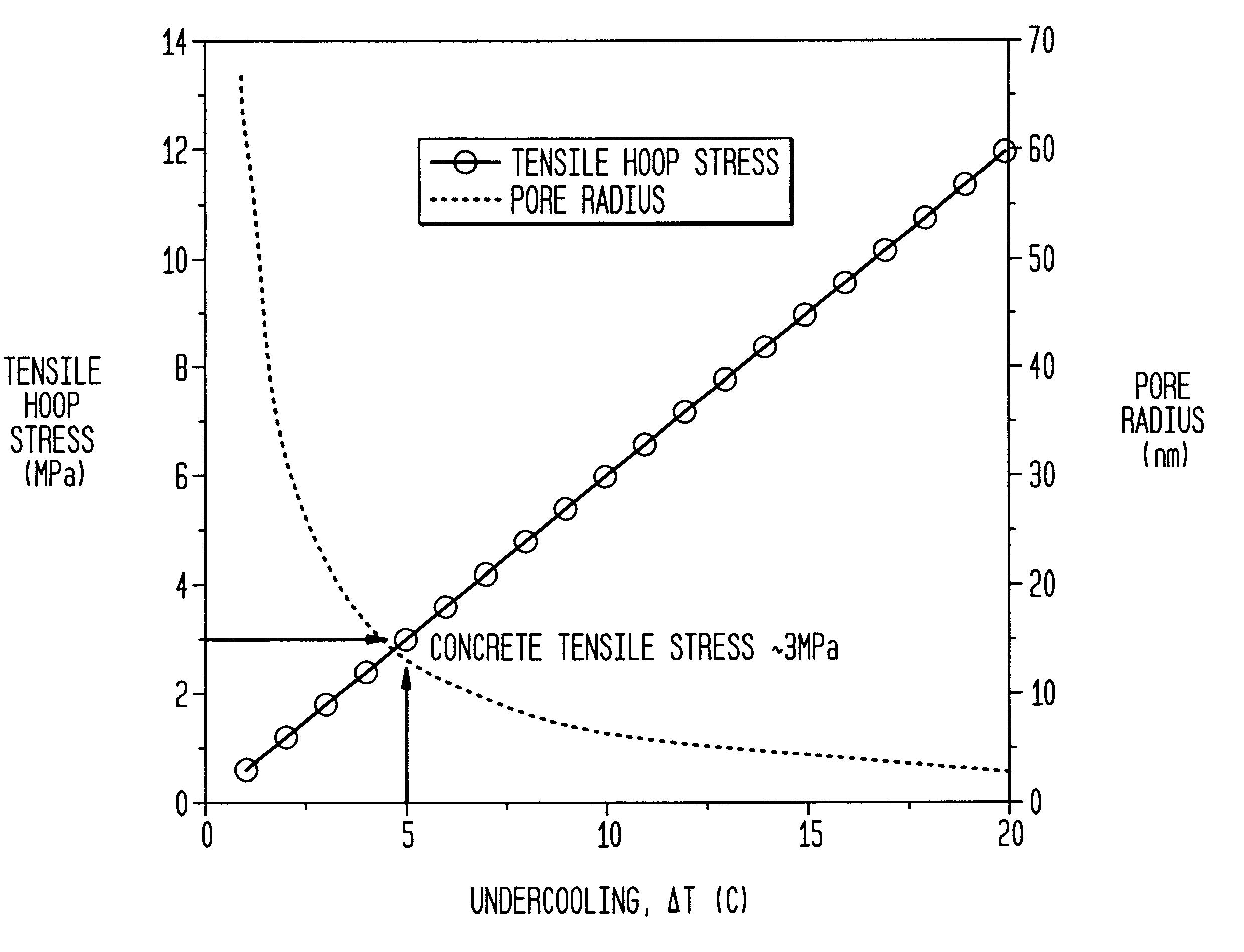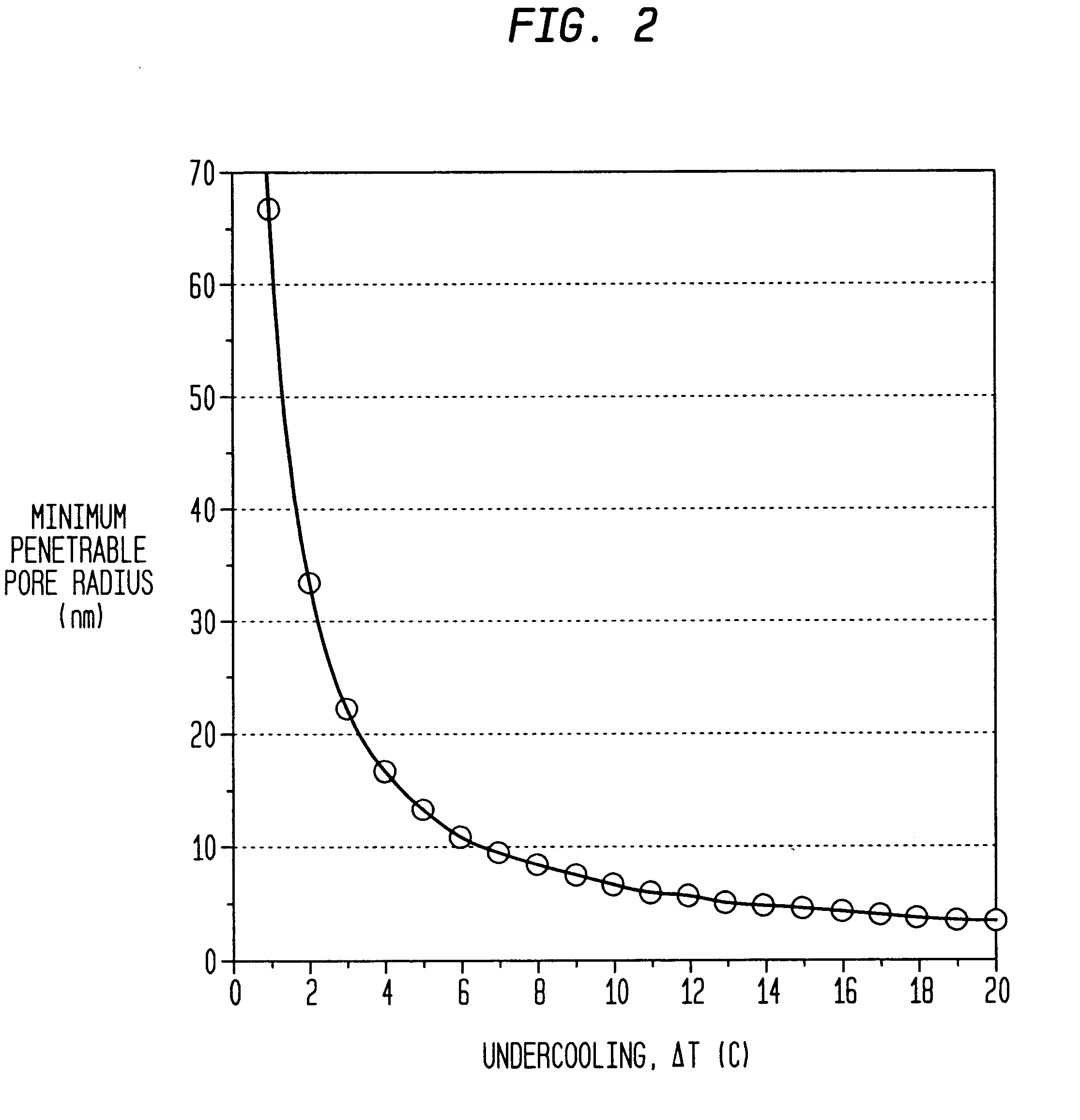Methods of protecting concrete from freeze damage
- Summary
- Abstract
- Description
- Claims
- Application Information
AI Technical Summary
Benefits of technology
Problems solved by technology
Method used
Image
Examples
Embodiment Construction
Metaldehyde possess one of the highest nucleation temperatures for ice nuclei in the vapor phase (.about.0.4.degree. C., Fukata 1963); however, little is known about the freezing capabilities (ice nucleated from the liquid phase) of metaldehyde. Furthermore, from the cited literature, the mode of preparation and molecular structure of an ice nucleant is known to have a drastic effect on the nucleating properties. Thus, an effort to isolate the critical parameters affecting the freezing nucleation capabilities of metaldehyde was conducted. Freezing experiments were done on metaldehyde-impregnated Vycor glass samples having uniform 100 .ANG. pores.
PROCEDURES
(a) Materials
The metaldehyde (C.sub.2 H.sub.4 O).sub.n used in this investigation was manufactured by Fluka Chemika. The chemical formula of metaldehyde is often denoted as (C.sub.2 H.sub.4 O).sub.n since there is a strong tendency for the tetramer units (CH.sub.3 CHO).sub.4 to form long fibers (as discussed earlier). Metaldehyde s...
PUM
| Property | Measurement | Unit |
|---|---|---|
| Fraction | aaaaa | aaaaa |
| Angle | aaaaa | aaaaa |
| Angle | aaaaa | aaaaa |
Abstract
Description
Claims
Application Information
 Login to View More
Login to View More - R&D
- Intellectual Property
- Life Sciences
- Materials
- Tech Scout
- Unparalleled Data Quality
- Higher Quality Content
- 60% Fewer Hallucinations
Browse by: Latest US Patents, China's latest patents, Technical Efficacy Thesaurus, Application Domain, Technology Topic, Popular Technical Reports.
© 2025 PatSnap. All rights reserved.Legal|Privacy policy|Modern Slavery Act Transparency Statement|Sitemap|About US| Contact US: help@patsnap.com



